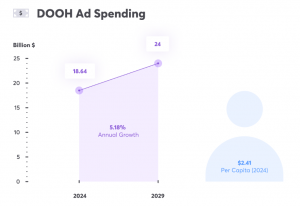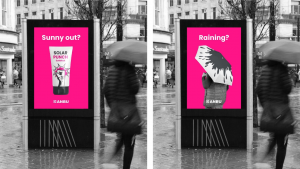
We all have a very love-hate type of relationship with ads. We hate them when we are not able to skip them at the start of a YouTube video. But we love them when we are able to find the cutest outfit thanks to Instagram algo showing us the most accurate ads after gleaning all the information – and more – from our interaction with the app. The thing about ads is that they are in abundance and are everywhere in so many forms that we can’t escape them. Advertisers are deft as well because, in a world where advertising trends go obsolete faster than Gen Z slang, you have no other option than to improvise and keep your head above the water.
Advertising trends dominating the digital world in 2024
Experts have prophesized that 2024 would be a breakthrough year for the ad industry. Their idealism was based on technological advancement and continued post-pandemic recovery where companies are ready to spend more to market themselves.
According to Statista, the total digital ad spending in 2024 is expected to jump to $667.58bn.
And money seems to be gushing out of everywhere. Social media advertising spend is estimated to reach $219.8 billion in 2024, according to Sprout Social.
The prediction about an ad boom in 2024 was also due to the spurt of technological advances, chiefly Artificial Intelligence, which is reshaping the current advertising trends.
I don’t know about you guys, but if there’s one thing that I remember from 2023 is ChatGPT and how the entire AI brouhaha took the world by storm.
The rapid AI advancement is also set to revolutionize advertising industry trends and change the way campaigns are planned, executed, and optimized.
So, ok, we get it. The ad industry is changing, and more ad trends are emerging, so what should advertisers do to ensure they are not left behind?
Well, a good place to start is by looking at the key trends in advertising dominating in 2024 and seeing which one is the most relevant for targeting their preferred audience.
1. Short-form video boom
Captivating audiences with short, snackable videos was all the rage in 2023, and things haven’t changed a bit in 2024. Platforms like YouTube Shorts, TikTok, and even Instagram are pushing short videos that are easy to create and consume.
Today’s customers have little patience for long videos. In fact, over 25% of adults say they’ll close out a video after only the first 10 seconds. More than half say they’ll close it after 20 seconds. Video ads are also getting shorter to cope with the shrinking attention span.
As per Statista, the spending on video ads is estimated to reach $53.9 billion by 2025. It is because this format caters to short attention spans and allows for broad reach across demographics especially Gen Z, over 70% of whom spend over three hours daily watching online videos. So, it is given that video, in general is one of the most popular digital advertising industry trends.
With high engagement rates and the ability to tell stories effectively, advertisers are creating video ads for all platforms, including Facebook and Instagram, which are increasingly video-centric. It is because Facebook, Instagram, YouTube, and TikTok offer the highest ROI and marketers believe this money-minting will grow in 2024.
A new trend that has emerged out of video ads is interactive video ads.
These ads encourage viewers to actively participate rather than passively watch, leading to higher engagement levels. Videos with clickable elements encourage user interaction, leading to higher engagement and conversion rates. Research by Magna Global shows that interactive video ads have an average engagement rate of 47%, which is three times higher than traditional video ads.
2. Search advertising on social media
There’s a paradigm shift happening in how Gen Z searches for information. They’re increasingly turning to social media platforms over traditional search engines like Google.
According to Forbes, there is a decline of 25% in Google usage for search among Gen Z compared to Gen X. For example, 40% of Gen Z individuals use TikTok to find information on hair and makeup, compared to only 25% using Google.
Most trending ads these days are the ones created for social media and not traditional TV. This is because marketers are cashing in on the goldmine.
3. Cookieless advertising
Are we finally heading towards a world where we don’t have to sweat over whether we want to accept or reject cookies?
Search engines have started waging a war on cookies. Apple and Firefox have already ended third-party cookie support and Google will also phase them out soon. With the rise of data privacy concerns and limitations on third-party cookies, advertisers are having to adapt.
A survey by Neil Patel revealed that 30.82% of marketers have a concrete plan in case cookies are completely phased out. The trends in the advertising industry are now shifting towards using alternative tracking methods like first-party data and contextual advertising. Some of the ways to collect first-party data are:
- Online surveys
- Sign-up forms
- Newsletters
- Community polls
- SMS answers
- Mobile notification responses
- Direct mail (offline post), etc.
Contextual advertising involves placing ads based on the content of a webpage or app rather than user data. For instance, an ad for athletic shoes might appear on a website about fitness training.
In a cookie-less world, Customer Data Platforms (CDPs) will become essential tools as they integrate data from various touchpoints to create unified customer profiles. The global CDP market exceeded $4.8 billion in 2022 and is expected to hit $19.7 billion by the end of 2027.
4. AI enters the arena
AI is having a big impact on digital advertising. From optimizing ad placement and bidding strategies to analyzing data and creating personalized experiences, AI is streamlining processes and making campaigns more effective.
It’s no surprise that AI is being used by social media marketers to drive productivity. AI tools like ChatGPT and Midjourney help marketers come up with campaign concept ideas and social post ideas and help with copy generation and text-to-image generation.
According to HubSpot’s ‘The State of Marketing’ report for 2024, approximately 40% of companies have hired dedicated AI experts to support their marketing teams.
In 2024, marketers are also using AI for Dynamic Creative Optimization (DCO) to generate different ad versions tailored to individual user profiles. According to Criteo, DCO can improve shopper click-through rate engagement by up to 31%.
Last year, Meta announced Sandbox, an ad tool powered by generative AI to let marketers optimize text, images, and backgrounds.
TikTok uses AI to help advertisers create short-form video ads that match the platform’s dynamic style. TikTok’s AI optimizes ads by testing various creative elements and determining the most effective combinations.
YouTube also leverages AI to assist advertisers in creating compelling video ads. For example, Video Builder and Bumper Machine convert static images and text into engaging video content and automatically create short ads from longer videos.
5. In-stream ads
With the decline of traditional cable TV viewership, streaming services are becoming the go-to source for entertainment. Around 50% of online video viewers now use a free, ad-supported streaming service at least once a week, according to new data from Parks Associates.
The abundance of streaming platforms means people are using more than one of them. This translates into millions of active users, offering advertisers a vast potential customer base.
This has made in-stream ads one of the most famous advertising trends of 2024. As the US ad-supported video-on-demand viewers will reach 180.2 million in 2024, brands are expected to spend a staggering $30.10 billion on streaming advertisements. This includes money spent on Facebook and YouTube videos as well.
The switch from traditional linear TV to on-demand streaming services has also led to an increase in Connected TV (CTV) advertising.
CTV ads are video advertisements displayed on internet-connected TVs and devices like smart TVs, streaming sticks (Roku, Fire TV), and gaming consoles. These ads reach diverse demographics as in the U.S. alone, 82% of households own at least one CTV device, as per mntn.
According to Advertiser Perceptions, U.S. ad spend growth for CTV in 2024 will grow from 16.2% to $21.45 billion. CTV ads also see a 30% higher conversion rate compared to traditional TV ads, driven by better targeting and engagement.
Another advertising form getting traction in 2024 is addressable TV advertising. It is gaining significant traction for several reasons. Unlike traditional TV ads broadcast to everyone watching a program, addressable TV ads leverage data and technology to deliver targeted commercials to specific households or audience segments. This data can include demographics, viewing habits, purchase history, and more.
A study posted in Business Wire shows addressable TV advertising consistently delivers a reach of around 40%, regardless of the target audience size. This means advertisers are reaching the right people without wasting impressions on viewers who wouldn’t be interested.
This is why the U.S. addressable TV ad spend is expected to reach $13.4 billion in 2024, up from $10.9 billion in 2023.
6. Podcast sponsorships and ads
Podcasts have seen explosive growth in listenership over the past few years. As of 2023, there were approximately 464.7 million podcast listeners globally, a number expected to exceed 500 million by 2024, as per explodingtopics.com.
The best thing about these 500 million people is that they are one of the most engaged users compared to other digital media consumers, as NPR discovered that 75% of them will respond or take action after hearing sponsored content. Also, three in four listeners report being satisfied with purchases influenced by podcast ads.
The podcast advertising market has seen significant growth, with US podcast ad revenues expected to hit an estimated $2.16 billion in 2024.
One of the major benefits of podcast advertising is the ability to target niche audiences effectively. Podcasts cover a huge range of topics and genres, from comedy and true crime to business and health. This allows advertisers to place their messages in content that directly aligns with their target demographics.
7. Digital Out-of-Home (DOOH) ads
Over the past few years, you would have noticed that traditional static billboards are being replaced by dynamic digital displays with high-resolution visuals, animation capabilities, and even interactive elements. This immersive marketing experience is called Digital Out-of-Home (DOOH) advertising. This is the tech behind some of the most trending advertisements of recent years.
As per Eskimi, the global DOOH market is projected to reach $18.64 billion by this year.
The adoption of programmatic advertising in DOOH is transforming how campaigns are run. Nearly 60% of campaigns are expected to include programmatic DOOH over the next 18 months.
DOOH is becoming increasingly integrated with mobile technology. Location-based targeting allows advertisers to deliver ads relevant to the specific demographics and interests of people in a particular area.
QR codes on DOOH ads can drive immediate engagement, directing viewers to websites or landing pages for further information or promotions.
Advancements in technology are also pushing DOOH’s popularity. For example, interactive AR ads can transform a simple billboard into a virtual fitting room or a 3D product demo, creating memorable and impactful experiences.
With the growing importance of first-party data, DOOH is becoming more sophisticated in targeting and measuring the impact of ads. This shift is crucial as advertisers look to navigate privacy concerns and the diminishing availability of third-party data.
Conclusion
In 2024, the advertising industry is experiencing a transformative phase driven by technological innovation, shifting consumer behaviors, and new approaches to data and engagement. This has led to the rise of new advertising trends. Some of them have borne out of changing audience preferences, while others are due to genuine concerns like sustainable ad practices, privacy concerns, and hyper-focused targeting.
Consumers are demanding authenticity and value their time, so advertisers need to deliver engaging content that resonates with their specific needs and preferences. A successful ad campaign in 2024 will leverage these trends and focus on testing new tools and expanding to new social platforms for wider traction and more targeted marketing.
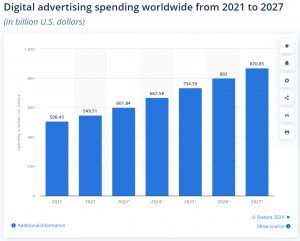


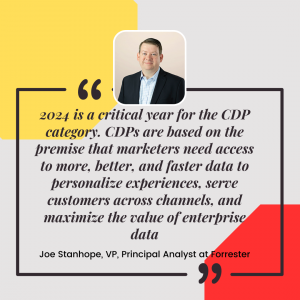

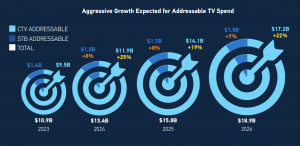
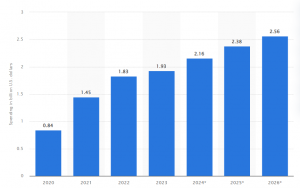 Source
Source